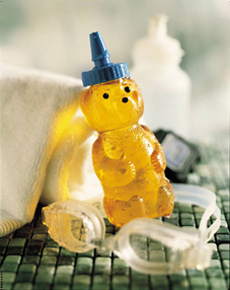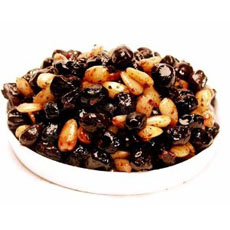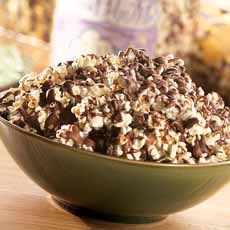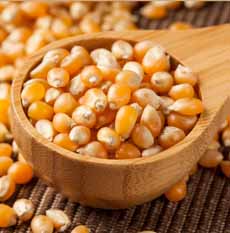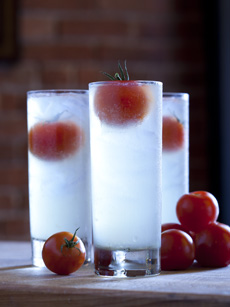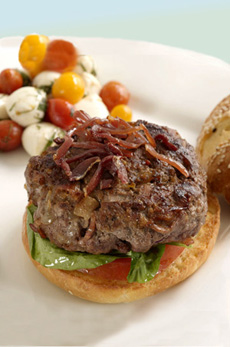|
December 16th is National Chocolate-Covered Anything Day.
Here’s a treat few people can resist: chocolate-drizzled (or chocolate-covered, if you prefer) popcorn.
Some popcorn companies won’t ship it until October, when the weather cools down.
But that’s O.K., because it’s easy to make this chocolate popcorn recipe, using a base of home-popped or store-bought popcorn, in fewer than five minutes.
If you like things sweet and salty, sprinkle some sea salt in the final mix.
A GREAT GIFT: If you’re going somewhere this weekend, you can quickly make a batch as a gift for your host. Hopefully, like us, you’ve kept all the cookie gift tins you’ve received, just waiting for an occasion like this. It’s so much easier and faster than baking.
While the chocolate coating isn’t on the nutritionist’s checklist, popcorn is a whole grain, good-for-you snack. And you can always convince yourself that chocolate has “healthy antioxidants.”*
> The year’s 12+ popcorn holidays.
> The history of popcorn.
RECIPE: CHOCOLATE COVERED (CHOCOLATE DRIZZLED)
POPCORN
Ingredients
1/2 cup of popcorn kernels
Oil for popping
Optional: coarse sea salt or spices (cayenne, curry, etc.)
8 ounces semi-sweet chocolate (chips, bars, baking squares)
Preparation
1. LINE two baking sheets with waxed paper. Pop the corn and place in a large bowl; you need enough space to toss so the popcorn doesn’t spill out of the bowl. Remove any unpopped kernels.
2. MELT the chocolate, preferably in a Pyrex measuring cup with a lip, and pour it over the still-warm popcorn. Toss thoroughly, using two very large spoons. Sprinkle with salt or spices as desired.
4. USE the spoons to spread the coated popcorn onto the waxed paper. Let cool until the chocolate has set (you can place the pans in the fridge for a few minutes).
5. USE a fork or other implement to break apart any large clumps. Place the popcorn in a serving bowl and serve.
THE HISTORY OF POPCORN
Thanks to the Aztecs and other Mesoamericans for discovering and developing popcorn.
Here’s the history of popcorn.
|
